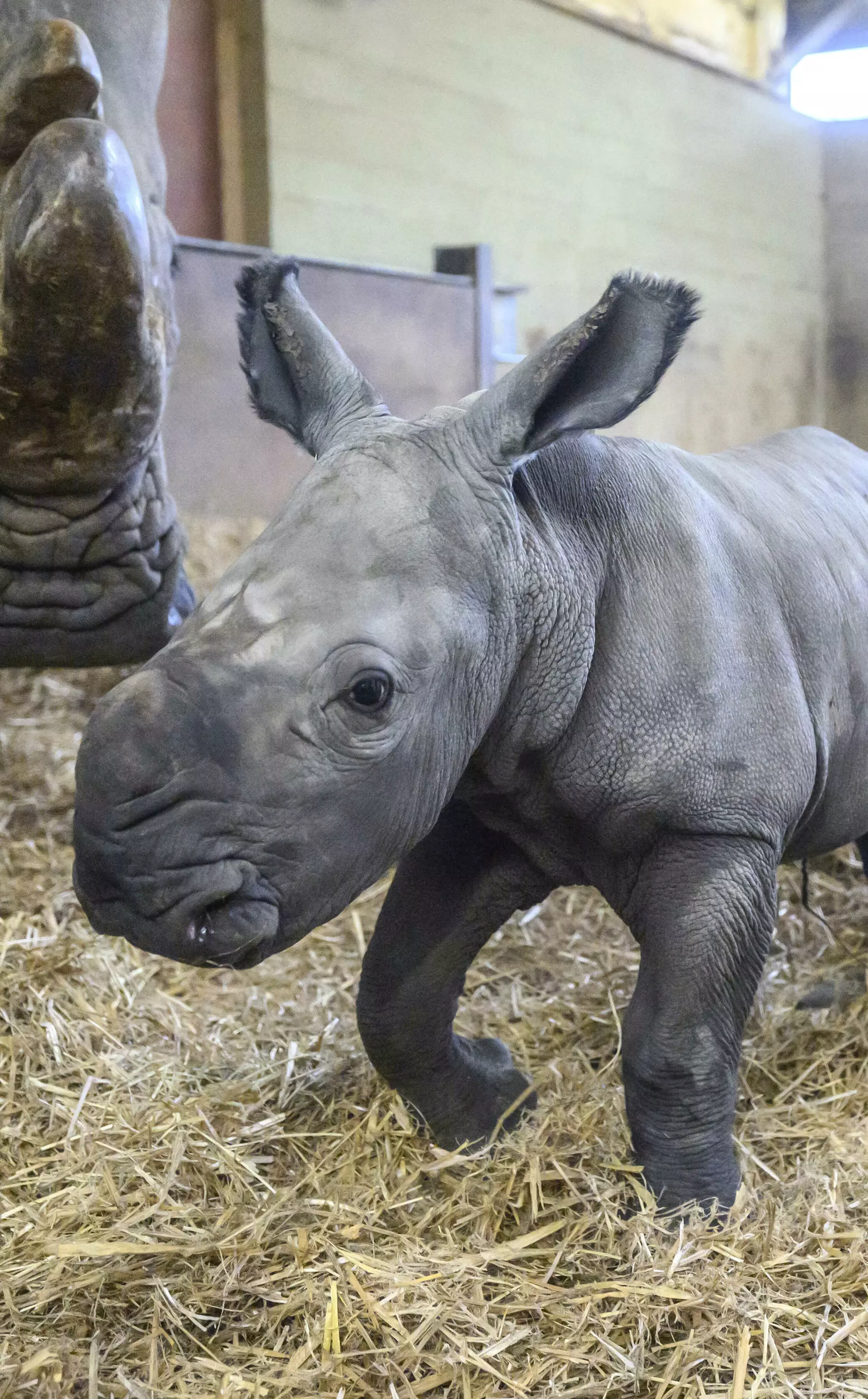The southern white rhino calf, tipping the scales at 45kgs, was born on March 7, to mum Jaseera and dad Sizzle.
The baby boy was born after a very quick four-minute labour to 13-year-old Jaseera - who was pregnant for 16 months with the calf.
Rhino keeper Mark Holden said: “This is Jaseera’s first baby, and it's been great to see her maternal instinct kick in. Jaseera has been nursing the calf and has been very protective of him. All the signs of a perfect rhino mum.”
Within two hours of being born, the tiny rhino started to take his first wobbly steps with Mum close to his side.
“Southern white rhinos are born with over-sized, rubbery feet, which they ‘grow into’, so the calf was understandably quite wobbly when he first started to walk. But he’s a fast learner and a week later he is now zooming around, exploring his cosy indoor den.”
Mark added that the new calf was extremely precious:
“Sadly, these magnificent creatures are still being hunted in the wild. The poached horns are primarily used for traditional medicine in Asia, due to mistaken beliefs that the horns have healing powers. Last year in South Africa alone around 500 white rhinos were killed for their horn, that’s more than one a day.”
According to the IUCN, there are 10,000 mature southern white rhinos left in the wild, with numbers continuing to fall.
Through ZSL, we've estimated the illegal wildlife trade is worth US$23 billion a year. ZSL is working around the world to stop the illegal trade through pioneering border detection in epicentres of illegal wildlife networks, establishing anti-poaching patrols and working closely with governments around the world.
The new calf was born as part of the European Endangered Species Programme (EEP), to help create a genetically diverse and healthy back up population in conservation zoos like Whipsnade.
Mark added that dad Sizzle, has been a vital member of the EEP.
“Sizzle has had 15 calves at Whipsnade Zoo, and those calves have gone on to produce 37 grandchildren around Europe and he’s also got 13 great grandchildren. He’s an incredible bull.”
And the little one, will hopefully follow in his dad’s footsteps.
Visitors will be able to visit the calf and Mum in the indoor dens at the White Rhino house, at the zoo. The calf will remain inside for the next two weeks while the pair bond, before the little boy is introduced to the ‘crash’ (a pack of rhinos) later this month.
If you treat your herd to a family membership, you’ll have already got your money’s worth around your second visit, and made tons of new memories too!
*Based on the average zoo admission prices for one or two adults with two children in relation to the family membership Direct Debit fee.
